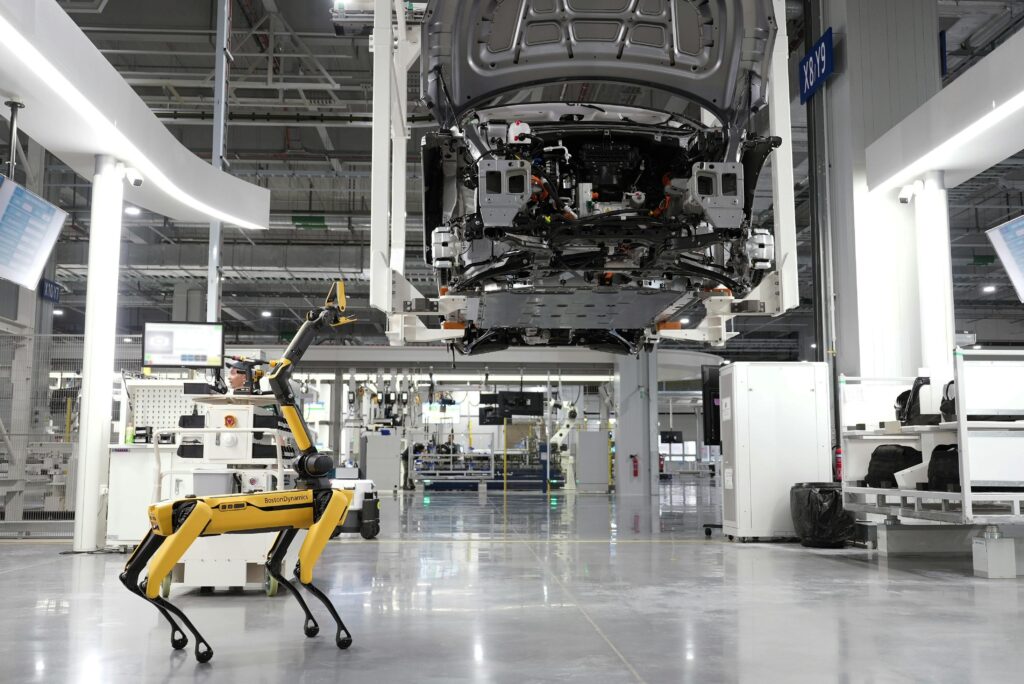European warehouses are moving from pilot projects to scaled deployment of mobile robotics and autonomy. Market trackers estimate the region’s warehouse automation market at about USD 4.9 billion in 2025, with growth of more than 14 percent annually through 2030 – a signal that automation is becoming a mainstream line item in capital planning rather than a niche experiment. At the same time, macro conditions are nudging operators toward robotics: EU job vacancy rates remain elevated by historical standards even after easing in early 2025, keeping pressure on staffing-intensive processes such as picking, internal transport and inventory control.

AMRs go mainstream – from point solutions to fleet operations
Autonomous mobile robots (AMRs) are now the fastest-expanding slice of intralogistics automation. Globally, AMR revenues were valued around USD 2.8 billion in 2024 and continue to accelerate on double-digit trajectories, led by e-commerce fulfillment and brownfield retrofits where robots can share space with people. Inside Europe’s warehouses, the big story is interoperability: in January 2025 a new version of the VDA 5050 interface – a common ‘language’ between mobile robots and fleet management systems – was published, making it simpler to run mixed fleets from different vendors on one traffic and mission-control layer. Alongside this, the updated ISO 10218 industrial robot safety standards released in 2025 clarify responsibilities between robot makers and system integrators, smoothing conformity assessment for projects that combine mobile bases with robotic arms.
Safety-by-design – the standard that underpins driverless trucks and tuggers
For autonomous forklifts, tuggers and carts, Europe leans on ISO 3691-4 – the safety rulebook for driverless industrial trucks, including AMRs and AGVs. It sets the baseline for speed limits, braking, detection and validation of safety functions, and it is now widely referenced in EU conformity documentation for in-warehouse vehicles. This standardization matters because material-handling vehicles are among the most hazardous equipment in workplaces such as warehouses and factories; managing risk through engineered controls is a priority for inspectors and insurers alike.
Agentic AI arrives on the floor – with European guardrails
A new wave of ‘agentic’ AI is emerging in logistics – systems that can break down high-level goals into subtasks, re-plan when faced with obstacles and coordinate with other agents. In Europe, deployment must track the staged obligations of the EU AI Act. The law entered into force on 1 August 2024; its first bans on certain practices began applying on 2 February 2025, and the main compliance regime for high-risk AI systems becomes applicable on 2 August 2026. Regulators also confirmed in July 2025 that there will be no delay to the legal timeline, an important planning assumption for operators embedding AI into safety-related control or workforce management. In practice, this means projects pairing AMRs with agentic task-planning software need documented risk management, data governance and human oversight from the outset.
Inventory intelligence – drones and computer vision mature
Indoor drones for automatic cycle counts are moving from after-hours flights to co-working alongside staff, thanks to more robust obstacle detection and indoor positioning. One large European retailer reported operating more than 250 inventory drones across dozens of warehouses in nine countries by 2024, illustrating how aerial robots can raise stock accuracy and reduce working-at-height risks. The broader warehouse drone systems market is also growing quickly worldwide, reflecting a shift from manual counts to always-on inventory intelligence.
Connectivity and edge – why private 5G is entering the bill of materials
As fleets scale, reliable wireless becomes a strategic dependency. The EU’s 5G Observatory tracks rapid expansion of both public and private 5G across the bloc, with the Commission’s digital targets pushing toward pervasive coverage by 2030. Sector reports note that Europe’s 5G migration continues to free up spectrum and improve energy efficiency – a boon for dense robot traffic, machine vision and real-time digital twins that depend on low-latency links. Private 5G, often paired with on-premise edge computing, is therefore entering more RFPs for greenfield facilities and high-throughput brownfields where Wi-Fi contention is a bottleneck.
Regulatory horizon – what integrators must build for now
Two EU-level instruments are shaping procurement and engineering checklists. First, the Machinery Regulation 2023/1230 – which replaces the Machinery Directive – becomes applicable on 20 January 2027, with new provisions around digital documentation, cybersecurity for safety-related control systems and clearer roles in the supply chain. Warehouse robotics projects signed today will still be in service when these rules bite, so future-proofing is prudent. Second, the AI Act’s phased obligations require mapping which software modules fall into ‘high-risk’ scope and designing human oversight and post-market monitoring into the system lifecycle – particularly relevant for autonomous vehicles and agentic orchestration engines that influence worker safety or product quality.
From pilots to networked autonomy – the operating model shift
Analysts caution that although 2025 opened strongly for warehouse automation, macro uncertainty still affects timing of large projects. The direction of travel is clear, however: multi-site rollouts, standardized interfaces such as VDA 5050 to tame heterogenous fleets, and AI-enhanced orchestration that coordinates AMRs, conveyors and goods-to-person stations as one system of systems. For operators, the practical to-do list now typically includes updating risk assessments to ISO 3691-4 and ISO 10218, validating wireless coverage for dense robot traffic, and drafting AI Act conformity plans for any agentic software components in the safety chain. The European market context – steady demand growth, persistent hiring challenges and a tight regulatory cadence – suggests this transition will continue gathering speed through 2026 and beyond.
Key takeaways for 2025 projects
- AMRs and autonomous forklifts are scaling, helped by common interfaces and updated safety standards.
- Agentic AI is viable in warehouses, but deployments must align with AI Act milestones in 2025 and 2026.
- Inventory drones and computer vision are moving into day-shift operations, improving accuracy and ergonomics.
- Private 5G and edge computing are becoming critical enablers for reliable, low-latency robot fleets.
